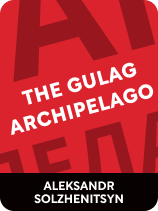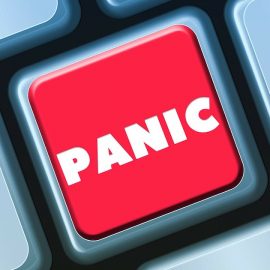

This article is an excerpt from the Shortform book guide to "The Gulag Archipelago" by Aleksandr Solzhenitsyn. Shortform has the world's best summaries and analyses of books you should be reading.
Like this article? Sign up for a free trial here.
What is The Gulag Archipelago? What was the book’s purpose, and what difference did it make?
In the Soviet Union, prisoners such as Aleksandr Solzhenitsyn were arrested on minor or fabricated charges, abused by officials, and held in camps for decades. Many were worked to death. Solzhenitsyn’s landmark exposé was banned, and he was persecuted by his own government for publishing it.
Keep reading to learn about the significance of The Gulag Archipelago.
What Is The Gulag Archipelago?
In 1945, Aleksandr Solzhenitsyn was removed from his position as a decorated military officer in the Red Army and sentenced to eight years in a gulag, or a Soviet prison labor camp. He was charged with the crime of “anti-Soviet propaganda”—making negative comments about the country’s leader, Joseph Stalin, in a private letter to a friend. As an author, Solzhenitsyn dedicated his life to writing books that exposed the injustices of the Soviet legal system and the horrific realities of life in prison, where thousands—if not millions—of prisoners died from abuse and neglect in the 20th century.
What is The Gulag Archipelago? It’s the longest and most ambitious of these books, and it acts as a history of the gulag system from the 1917 revolution to the death of Stalin in 1953, with a focus on the years that Stalin was in power. Alongside scenes from his own imprisonment, Solzhenitsyn includes anecdotes from other prisoners, excerpts from letters and courtroom transcripts, writings from Soviet officials that attempted to justify the camps, and more. According to these varied sources, life in the gulag was brutal and violent, physically and psychologically breaking down the prisoners it didn’t kill outright.
| Inaccuracies and Exaggeration in The Gulag Archipelago We now know that the numbers Solzhenitsyn provided for the scale of the camps were most likely inaccurate, though by how much is difficult to determine. While Solzhenitsyn suggests that around 12 to 15 million people were imprisoned between 1917 and 1953, the most conservative estimates place the number closer to 2 to 3 million. Regardless, an enormous number of lives were destroyed in gulags, and while Solzhenitsyn’s numbers are questionable and the subsequent decades of scholarship have complicated some of his arguments about the government’s goals for prisoners, his overall impressions of the camps—as sites full of theft, abuse, sexual violence, and random executions—have never been contradicted. Ultimately, even Solzhenitsyn’s inaccuracies worked as a criticism of the Soviet government—he had no choice but to use unreliable sources because the government wouldn’t acknowledge what it was doing. As several scholars have pointed out, Solzhenitsyn was concerned less with perfect accuracy than with starting a conversation by challenging the government to refute his claims of large-scale imprisonment. |
The book was written in secret, under constant threat of seizure by State Security—the counterintelligence and secret police organization responsible for operating the camps—and of Solzhenitsyn being returned to prison. While the book ultimately had to be published abroad in France, Solzhenitsyn intended it primarily for Russian readers. His hope was that public exposure of Soviet human rights abuses would encourage others to speak out and demand change from their government, despite the consequences.
| Publication and Impact Solzhenitsyn’s secrecy when writing the book was justified—the KGB seized his papers multiple times, and his assistant either killed herself or was murdered for attempting to protect his work. Almost as soon as the book was published, Solzhenitsyn was arrested and deported to Germany. He and his family subsequently fled to the United States and lived there for 20 years, unable to return home until after the collapse of the Soviet Union in 1991. Despite these attempts by the government to silence Solzhenitsyn, the book had a huge impact both at home and internationally. The first volume of the book was circulated in Russia through underground samizdat publications, inspiring a few other gulag survivors to self-publish their own accounts, and the popularity of translations fostered international criticism of Soviet gulags. An official version of the book was finally released in Russia in the mid-1990s, where it’s now required reading for public school students. |
The Gulag Archipelago moves through the history of the camps chronologically and geographically, relying heavily on personal accounts and Solzhenitsyn’s own memories. The full text is nearly 2,000 pages and was broken up into three volumes for publication. This guide is based on the abridged version produced in 1982 for educational use. While the overall narrative is the same, this version omits many of the extended personal anecdotes and details about the gulag system prior to Stalin’s rise to power in the late 1920s.
An Appeal for Change
Solzhenitsyn ends The Gulag Archipelago with a call for other accounts of the camps to be published—not state-sanctioned narratives, but personal accounts that might supplement or complicate his own work by giving more accurate numbers or a more complete picture of conditions in various camps. Wrapping up his critique of the Soviet government as an oppressive and authoritarian institution, Solzhenitsyn doesn’t propose specific political changes (though he hints several times that he believes that the camp system ought to be abolished), but instead appeals to the reader to recognize the government’s corruption and to seek out alternative histories from ordinary citizens.
(Shortform note: Solzhenitsyn’s approach to activism is an example of what is sometimes called “speaking truth to power,” a type of non-violent protest that tries to make uncomfortable facts public, in the face of censorship and the threat of violent retaliation, as a way to inform and inspire others.)
The Soviet government worked to make its power seem absolute and to discourage citizens from banding together. By exposing these tactics and the brutality with which prisoners were treated, Solzhenitsyn says he hoped to start a trend of public criticism of the government in literature, and that he believed that open communication between citizens would create the conditions for more concrete forms of resistance. The government remained in power for as long as it had by making it impossible for people to discuss the grim realities of their lives. If open discussion had suddenly become possible, the people might have recognized how abusive the government truly was and how utterly it had failed to fulfill the promises of the revolution—equality, prosperity, and an end to exploitation.
| The Collapse of the Soviet System Solzhenitsyn’s vision of the future of anti-Soviet resistance came to pass when the Soviet Union collapsed two decades later, in the early ’90s. Under Mikhail Gorbachev, the USSR instituted a number of democratic policies which decreased censorship, released political prisoners, required greater transparency from the government, and expanded freedom of speech for the average citizen. The following years of perestroika (reconstruction) and glasnost (openness) were marked by protests, the formation of a number of human rights organizations, public recognition of past atrocities, and successful independence movements in the Soviet states of Eastern Europe. All of these actions had previously been met with violent repression, but this time they were largely permitted, and the Soviet Union itself was formally—and peacefully—dissolved in December of 1991. Though this had not been his goal, Gorbachev declared that the government had lost popular support and that it was time for something new. |

———End of Preview———
Like what you just read? Read the rest of the world's best book summary and analysis of Aleksandr Solzhenitsyn's "The Gulag Archipelago" at Shortform.
Here's what you'll find in our full The Gulag Archipelago summary:
- A book that was banned for exposing human rights abuses to the world
- A work of historical nonfiction that describes life in Soviet prison labor camps
- How the Soviet government used violence, paranoia, and repression to control their citizens






